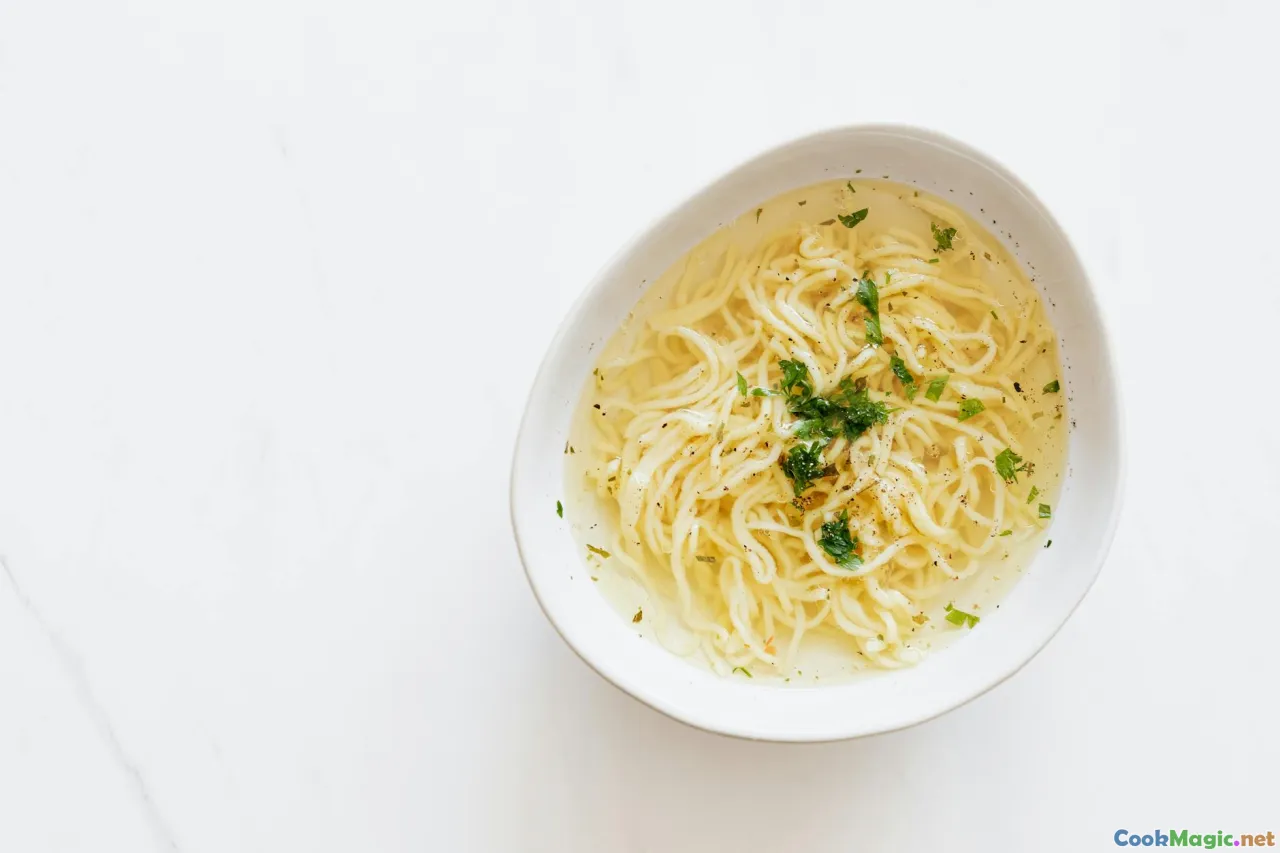How to Make Perfect Uzbek Lagman Noodle Soup
8 min read Discover the secrets to crafting authentic Uzbek Lagman, a hearty noodle soup rich in flavor, tradition, and cultural significance, perfectly at home. April 23, 2025 19:55
How to Make Perfect Uzbek Lagman Noodle Soup
Imagine walking through the bustling bazaars of Tashkent at dawn, where the aroma of freshly prepared Lagman wafts through the air, mingling with the scent of spices and sizzling meat. This iconic dish, beloved across Uzbekistan and Central Asia, is more than just a noodle soup; it’s a vibrant tapestry of history, culture, and family tradition. Mastering the art of making authentic Lagman at home is a journey into the soul of Uzbek culinary heritage, where every ingredient tells a story and every step is a tribute to centuries of craftsmanship.
A Cultural and Historical Tapestry
Lagman’s roots stretch deep into the heart of Central Asia, a region historically traversed by the Silk Road. This culinary gem embodies a fusion of Turkic, Persian, Chinese, and Russian influences, reflecting the diverse peoples and traditions that have shaped Uzbekistan over centuries.
Traditionally, Lagman was a communal dish, prepared by families gathering around a large wooden table, kneading dough, chopping vegetables, and simmering broths. It’s a dish that signifies hospitality, resilience, and shared joy. Today, making Lagman from scratch is a way to reconnect with these ancient customs, transforming a simple bowl into an act of cultural reverence.
The Ingredients: Quality and Authenticity
The magic of Lagman begins with the ingredients. To achieve the perfect balance of flavors and textures, sourcing high-quality, authentic components is essential.
For the Noodles
- Flour: Preferably Uzbek or Central Asian wheat flour, rich in gluten for elasticity.
- Water: Fresh, cold water to hydrate the dough.
- Eggs: Optional, but they add richness and help create a tender, chewy noodle.
- Salt: A pinch for flavor.
For the Broth and Filling
- Meat: Traditionally, lamb or beef shank, cut into chunks. The fat adds depth.
- Vegetables: Onions, bell peppers, tomatoes, carrots, and potatoes, finely chopped.
- Spices: Ground cumin, coriander, black pepper, and a subtle hint of paprika.
- Herbs: Fresh cilantro and parsley for garnish.
- Additional: Vinegar or lemon juice for acidity.
Preparing the Dough: The Foundation of Perfect Noodles
The noodles are the soul of Lagman, and their texture can make or break the dish.
- Mixing the Dough: In a large bowl, combine flour and salt. Create a well in the center and add beaten eggs and water gradually, mixing with your hands or a spoon until the dough begins to come together.
- Kneading: Transfer to a floured surface and knead vigorously for at least 10-15 minutes until the dough is smooth, elastic, and slightly tacky. Proper kneading develops gluten, giving the noodles their signature chew.
- Resting: Cover the dough with a damp cloth and let it rest for 30 minutes. This relaxes the gluten, making it easier to roll.
Rolling and Cutting the Noodles
- Rolling: Divide the dough into manageable portions. Roll each piece into a thin sheet—aim for nearly translucent.
- Cutting: Using a sharp knife or pasta cutter, slice the sheets into strips about 1/4 inch wide.
- Drying: Lightly dust the noodles with flour and set aside to prevent sticking.
Preparing the Broth and Filling
While the noodles rest, focus on the rich, savory broth:
- Browning the Meat: In a large pot, heat some oil. Brown the chunks of lamb or beef until caramelized, releasing a deep, smoky aroma.
- Adding Vegetables and Spices: Toss in chopped onions, carrots, and bell peppers. Cook until softened. Add spices, stirring to coat.
- Simmering: Pour in water or broth, bring to a boil, then reduce to a gentle simmer. Cover and cook for 1.5 to 2 hours, allowing the meat to become tender and flavors to meld.
- Final Touches: Adjust seasoning with salt, pepper, and a splash of vinegar or lemon juice for brightness.
Assembling the Lagman
- Cooking the Noodles: During the broth’s final simmer, cook the noodles in boiling salted water until just tender—about 2-3 minutes.
- Combining: Ladle the hot broth with vegetables and meat into deep bowls. Add the cooked noodles, allowing them to soak up the flavors.
- Garnishing: Top with freshly chopped cilantro and parsley. Add a squeeze of lemon or a dash of chili if desired.
Serving and Enjoying
Authentic Uzbek Lagman is best enjoyed hot, preferably with a side of traditional Uzbek bread—non—to scoop up the hearty broth. The dish’s complex layers of flavors, from the tender meat and savory broth to the chewy noodles and fresh herbs, create a symphony of textures and tastes.
Personal Insights and Tips
Having traveled across Uzbekistan and tasted Lagman in various regions, I’ve learned that each family has their secret touch—be it a particular spice, a special technique, or a unique vegetable combination. My personal recommendation is to embrace the process and make it your own. Use fresh, local ingredients, and don’t rush the simmering stage; patience here yields depth.
Moreover, the joy of Lagman lies in sharing. Invite friends or family to cook with you—kneading dough, chopping vegetables, and stirring the broth become communal acts that deepen the dish’s cultural significance.
Final Thoughts
Making perfect Uzbek Lagman at home is an enriching culinary adventure—an homage to centuries of tradition and a celebration of Central Asian flavors. It’s a dish that warms the heart, stimulates the senses, and connects you to a vibrant culture through every bite. Whether you’re a seasoned chef or a curious beginner, embracing the craft of Lagman will surely reward you with a bowl of soulful, delicious comfort.
So roll out your dough, gather your spices, and embark on this flavorful journey—your perfect Lagman awaits!









